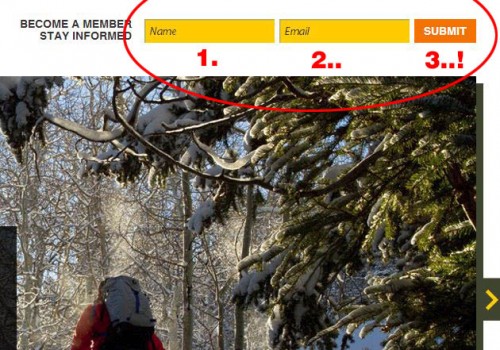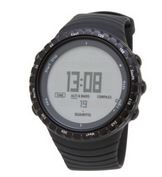Wasatch Backcountry Alliance
I’ve often thought how wonderful it would be to show up at a Forest Service meeting with a big sack of cash. “Here you go, I brought this for you. Keep it.” While this may sound crass and borderline illegal, it is essentially what all of the ski areas and guiding concession do by way of leases and permit fees, which is probably why the Forest Service listens to them so closely. Conversely, backcountry users pay nothing and demand things like trailheads, rangers and avalanche forecasters, all of which costs the Forest Service money. Personally, I’d be in favor of a small pay-to-play fee for backcountry use along the lines of a hunting and fishing license, which is about $40 per year. The dollar amount is trivial compared to the price of a day ticket at a ski resort, and it would serve to both bring in revenue for the Forest Service and provide an all important head count.
A common sentiment at land use meetings is that backcountry skiers just want to “save all of the powder for themselves and their six other friends.” While the first part may be true, the second part is way off – on any given day there are hundreds, if not thousands of people using the Wasatch backcountry. It has been estimated that Wasatch backcountry usage is the equivalent of one ski resort on any given day. Unfortunately, there is no way to prove this as there hasn’t been an accurate trailhead census done for years, if ever. To add to this, the Forest Service also relies on data collected by its concessionaires such as the Wasatch Powderbird Guides, who in 2008/09 claimed they saw a total of 408 backcountry users for the entire season, versus the 1,293 that WPG flew. If you were a Forest Service bureaucrat looking at that, you might think that heli skiers outnumbered human powered recreationalists by a ratio of 3 : 1, which is hardly the case.
But now is the time to stand up and be counted. The standing part is actually optional, but if you use the Wasatch backcountry in any form and would like to be part of a unified voice, the Wasatch Backcountry Alliance has been recently formed to do just that. There are no fees and it is as simple as going to http://wasatchbackcountryalliance.org/ and entering your name and email address. The organization and website is brand new, so you don’t have to worry about reading a bunch of stuff because there is nothing there yet except a sign-up option. Spam and selling your e-mail address is not a concern as the organization is run by a bunch of skiers who have a hard enough time just finding the on/off button on their computer.
It doesn’t matter if you are a 100 day a year local or a once every five year visitor, or whether you are a skier, snowboarder, snowshoer, hunter, birdwatcher, runner, hiker or kite flyer. If you use the Wasatch backcountry and want to be involved in decisions that effect it, joining the Wasatch Backcountry Alliance is a great first step.
________________________________
Help support StraightChuter.com and be counted while counting vertical with a Suunto Core Altimeter Watch from Backcountry.com. Click on the photo below…
Category: Announcements, Wasatch Mountains













A “common sediment”? Is it mud and silt? Or more like the grape must left in a wine bottle (or yeast in a beer bottle)?
“sediment”? ITYM “sentiment”.
My brain was having a sedimental moment. ;)
Andrew interesting thoughts. Do you remember when Millcreek canyon did not have the pay shack? I do. I was mad at first when the put the pay shack in, I thought as a taxpayer this canyon should be free to use. But pretty quickly after the pay shack was installed the bathrooms, trailheads and picnic areas were improved a lot. So in this case I think the pay to play worked.
It’s possible to monitor trailhead usage at low cost with a simple photogate; a popular trail near my hometown had one in the 1980s. (Of course, as kids, we’d walk circles around it and listen to a relay click…).
Pay to play is perhaps a reasonable plan for regular users, but it’s a significant blocker to getting less-outdoorsy people into the woods. The present Washington system of NW Forest Passes ($30/yr; non-NPS federal lands), Discover Passes ($30/yr, $10/day, state parks), Rainier NP (~$15/weekend, ~$40 climbing pass, ~$80 annual, includes NW Forest Pass) and Sno-park ($40/yr, $20/day, +$40 for XC-accessible THs) passes are confusing and prohibitive to dabbling users.
Getting voters into the woods to see their lands must be low-friction, lest they stop voting for preservation.
Are snowmobiler’s invited? I am just an occasional visitor to the Wasatch from Tahoe, but I did hear and see snowmobilers in the Wasatch when I was there. I was told by my hosts that it was illegal but that there was no enforcement. Does the BC Alliance need to distinguish between motorized and non motorized use? I will join when I have a chance, as a skier.
I just registered on the website, it specifies “human powered” recreation. Did you mention that in your blog? Maybe I didn’t read carefully enough?
@charlie, i agree that to pay to play in washington and oregon is onorous and confusing and a basic pita. i’m a scofflaw there.
i just joined the alliance – thank you for making it so easy.
for those who don’t know, it’s not recommended to turn on and off your computer, until you’re leaving fr that 3 week hut trip.
are those zloty in the picture? if so, thems a lot of grozy. would any kind of currency make a difference? because perhaps the usfs would accept lira …
who cares if a pay to play system discourages dabbling users … don’t we have enough of them out there as it is? i like the idea.
Maybe a good first project would be a backcountry census day. For LCC, 4 census stations would be enough. For BCC, you might need 10? So could you get 30 volunteers to each take a Saturday off for 4 hours? What would be a good incentive/thank you? A new BD puffy? What data would you collect (keep it simple)?
I wonder if the various “Are you beeping” signs could be rigged up to count how many people trigger it. It wouldn’t be absolutely accurate (non-beacon, off-beacons, double passes), but it could offer a starting point at least. Sort of an electronic turnstile.